EUR/AUD may not be a major currency pair, but it’s still in demand among traders. The pair is influenced by factors that can create unique market conditions and favorable trading circumstances for market participants.
To trade EUR/AUD:
- Learn the fundamentals of trading EUR/AUD
- Research potential forex brokers and select one
- Choose a forex trading platform
- Analyze the pair
- Create a comprehensive trading plan that includes a sound trading strategy
- Place your order, monitor your position, and close the trade
EUR/AUD has a high degree of predictability and decent market swings that make the pair an attractive choice for many traders. With a good trading strategy, you can leverage the pair’s characteristics to potentially make a good income with minimal risk.
Currency Pair Chart and Profile
The EUR/AUD pair denotes how many Australian dollars you need to purchase one euro. This pair is commonly referred to as Euro Aussie in the forex market.
The economies behind EUR/AUD
The economies of Australia and the European Union (EU) are different both in terms of size and scope. The EU is the world’s second-largest economy and it relies heavily on the region’s service sector, which makes up the majority of GDP. The Australian economy, on the other hand, relies heavily on gold production and exporting. In terms of GDP ranking, the Australian economy is on number 14.
EU monetary policy is established by the European Central Bank (ECB) and the Reserve Bank of Australia (RBA) is the central bank behind the Australian dollar.
What impacts EUR/AUD movement?
The strong relationship between gold and the Australian dollar has a substantial impact on EUR/AUD fluctuations. Similarly, market fundamentals related to Australia’s gold production may also play a part in the longer-term valuation of EUR/AUD.
EUR/AUD is also affected by other market drivers.
- Data from the EU and Australia. Interest rates play a big role in the fluctuation of EUR/AUD. It’s essential to keep up with any announcements from the ECB and RBA. It’s also important to know other economic data such as GDP and employment numbers.
- Political events and news. For example, geopolitical tensions can have a great influence on EUR/AUD.
Is EUR/AUD an exotic pair?
The EUR/AUD pair does not contain a currency from a developing economy and so the pair is not exotic. EUR/AUD is a minor currency pair or a euro cross pair.
Advantages of trading the EUR/AUD pair
Since it doesn’t contain the U.S. dollar, EUR/AUD provides room for diversification in the forex market. As the world’s largest economy, the U.S. tends to have a significant impact on the market and this can cause serious disruptions to your trading strategy. By trading a pair that is not bound to the U.S. economy, you insulate your trades against this risk and get the opportunity to explore unique trading opportunities.
Another big advantage of trading EUR/AUD is the pair’s volatility – EUR/AUD can be quite volatile. While some traders will struggle with this volatility, it can be advantageous to shorter-term traders with a sound strategy for trading volatile markets.
EUR/AUD also provides some good liquidity that makes trading the pair worthwhile.
Disadvantages of trading the EUR/AUD pair
Perhaps the biggest drawback of trading EUR/CAD is that although the pair provides decent liquidity, the liquidity is still limited compared to that of the majors. The limited liquidity can make EUR/AUD trades susceptible to market turbulence, causing undue risk.
Relatively lower liquidity and the common periods of high price fluctuations mean EUR/AUD can be costlier to trade. Because the movement of EUR/AUD can sometimes be uncertain, brokers may charge wider spreads on the pair.
The Best Time to Trade EUR/AUD
The Australian dollar experiences the most trading volume during the Asian trading session. On the other hand, most euro trading occurs during the London session. An optimum time to trade EUR/AUD will likely be when the Asian and London sessions overlap between 8 am and 9 am GMT.
The euro cross can also see movement during economic data releases that occur at 6 am, 12.30 pm, and 2 pm GMT. The releases tend to keep cross markets active and liquid.
The Best Strategies for Trading EUR/AUD
Traders employ various strategies when trading EUR/AUD, but here are some of the top ones.
Swing trading with probability analysis
Swing trading involves trading price swings within a specific range. Although you can swing trade EUR/AUD, your average swing trading strategy may not always work well due to the pair’s relatively high volatility.
When using the swing trading theory and simple moving averages as the basic trading strategy for EUR/AUD, it’s prudent to add in some probability analysis. This is because a basic strategy without further analysis may yield too many false signals in the market.
In addition to the probability analysis, it’s also a good idea to pair your swing trading strategy with big stops. Since EUR/AUD is quite volatile, tight stops will probably not work well.
Carry trading
A currency carry trade strategy involves borrowing a currency with a low interest rate to buy a higher interest currency. A trader can profit from the two currencies’ interest rate differentials by undertaking this type of trade. Historically, EUR/AUD has offered one of the highest interest rate differentials, making it a favorite among carry trade strategists.
In currency carry trading, the euro is one of the popular funding currencies because of its negative interest rates. The funding currency is the currency that gets exchanged in a carry trade transaction and it is characterized by a relatively lower interest rate. When carry trading EUR/AUD, you would borrow the euro and take a short position in the Australian dollar.
Scalping
The Australian dollar is often considered an indicator of growth and risk in global financial markets. As such, it’s often used as a trading device for taking advantage of short-term changes in market risk and global economic growth. The Australian dollar usually exhibits a positive correlation to the general global market short-term sentiment, and the same trend is usually observed in the EUR/AUD pair.
Because of the pair’s reaction to short-term market changes, EUR/AUD is suited to a multi-trade strategy that attempts to accumulate small profits instead of one large gain. This strategy, where a trader holds positions for short periods in a bid to make profits from many small trades, is known as scalping.
When scalping EUR/AUD, traders usually identify the pair’s general trend and trade this trend. For example, using a moving average to identify a trend, you could buy when the price crosses above the average and sell when the price crosses below the average.
Correlated Currency Pairs or Instruments
Besides being Australasian countries and key trade partners, both New Zealand and Australia’s economies heavily depend on exporting commodities. Additionally, both the Australian and New Zealand dollars offer the highest yields of the major currencies, making them the focus of carry trades.
Due to these similarities and connections, EUR/NZD usually makes moves that are similar to those of EUR/AUD.
Correlation of EUR/AUD with other indices, instruments, or commodities
Over time, the Australian dollar has shown a strong positive correlation to the global equity markets, i.e. the dollar normally strengthens when the equity markets rise, and vice versa. This relationship tends to show as a converse correlation between equities and EUR/AUD. For example, EUR/AUD tends to be negatively correlated to the S&P 500.
EUR/AUD also shows a significant negative correlation to gold prices. Since Australia is a huge gold exporter, the Australian dollar is strongly correlated to gold prices.
Although the correlation between gold prices and the Australian dollar sometimes goes away or totally reverses, the positive correlation tends to exist most of the time. As such, the inverse relationship between EUR/AUD and gold also exists most of the time.
Historically, the value of the Australian dollar has followed Australia’s main commodity export prices. For example, this trend can be seen with iron ore, which happens to be Australia’s biggest export.
Similar to the relationship between gold and EUR/AUD prices, iron ore futures generally tend to be inversely correlated to EUR/AUD.
Related Questions
How do you hedge against the Australian dollar falling?
To hedge against the Australian dollar depreciating, you need to have an understanding of other currencies beyond the Australian dollar itself. For instance, understanding how the Australian dollar interacts with other currencies and how the currencies impact the volatility of the Australian dollar can help with hedging.
Is the EU economy bigger than China?
In nominal terms (GDP), the EU economy is the second-largest economy in the world, after the U.S. economy. However, when measured according to purchasing power parity (PPP), the EU economy is the third-largest after the U.S. and China.
What happens if the Australian dollar falls?
When the Australian dollar loses value, it means that less foreign currency is needed to buy any given amount of Australian dollars. For example, if the value of EUR/AUD goes up from 1.5570 to 1.6950 it means that the Australian dollar is falling. Instead of needing €0.64 to buy one Australian (1/1.5570), you will only need about €0.59 (1/1.6950). The depreciation of the Australian dollar will make Australia’s goods and services cheaper compared to goods and services made in foreign countries.


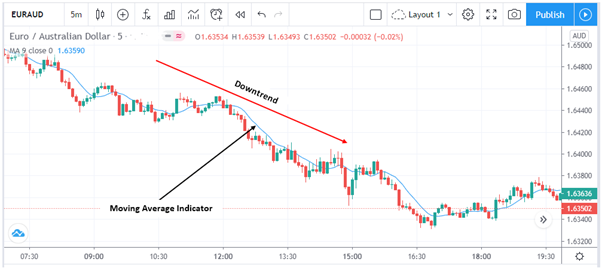
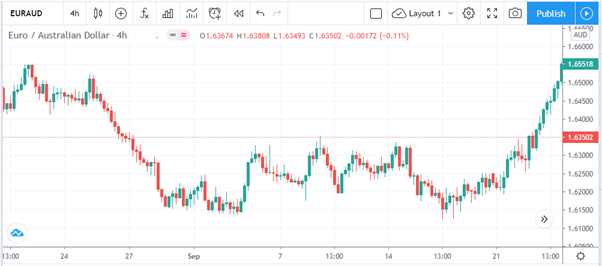
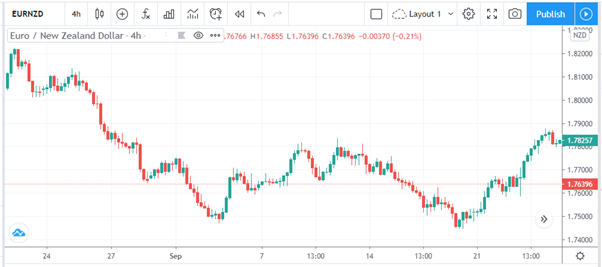
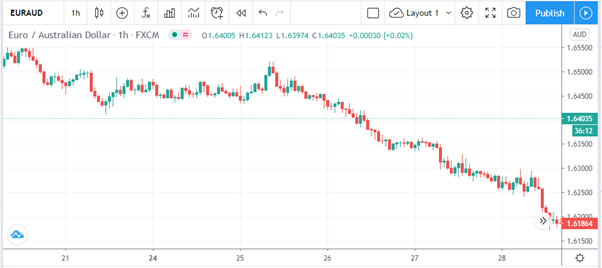
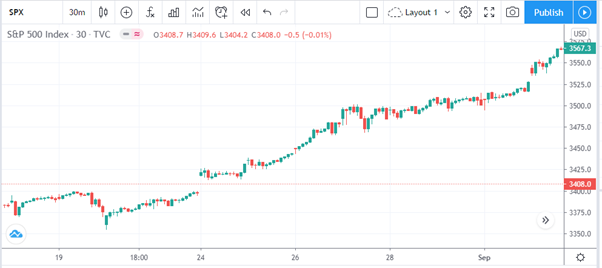
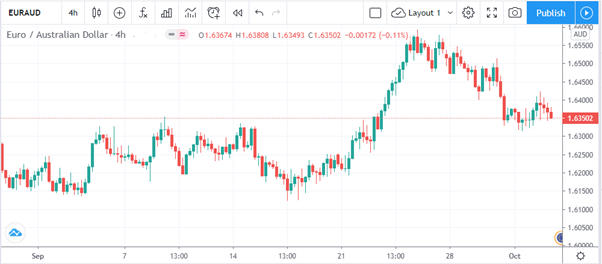
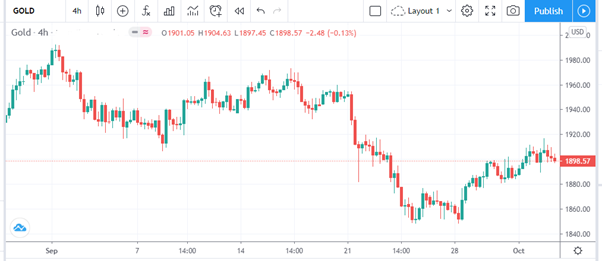
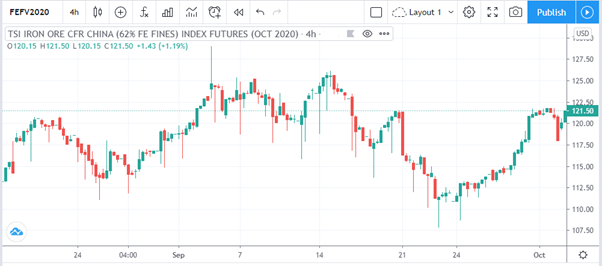






Leave a Reply